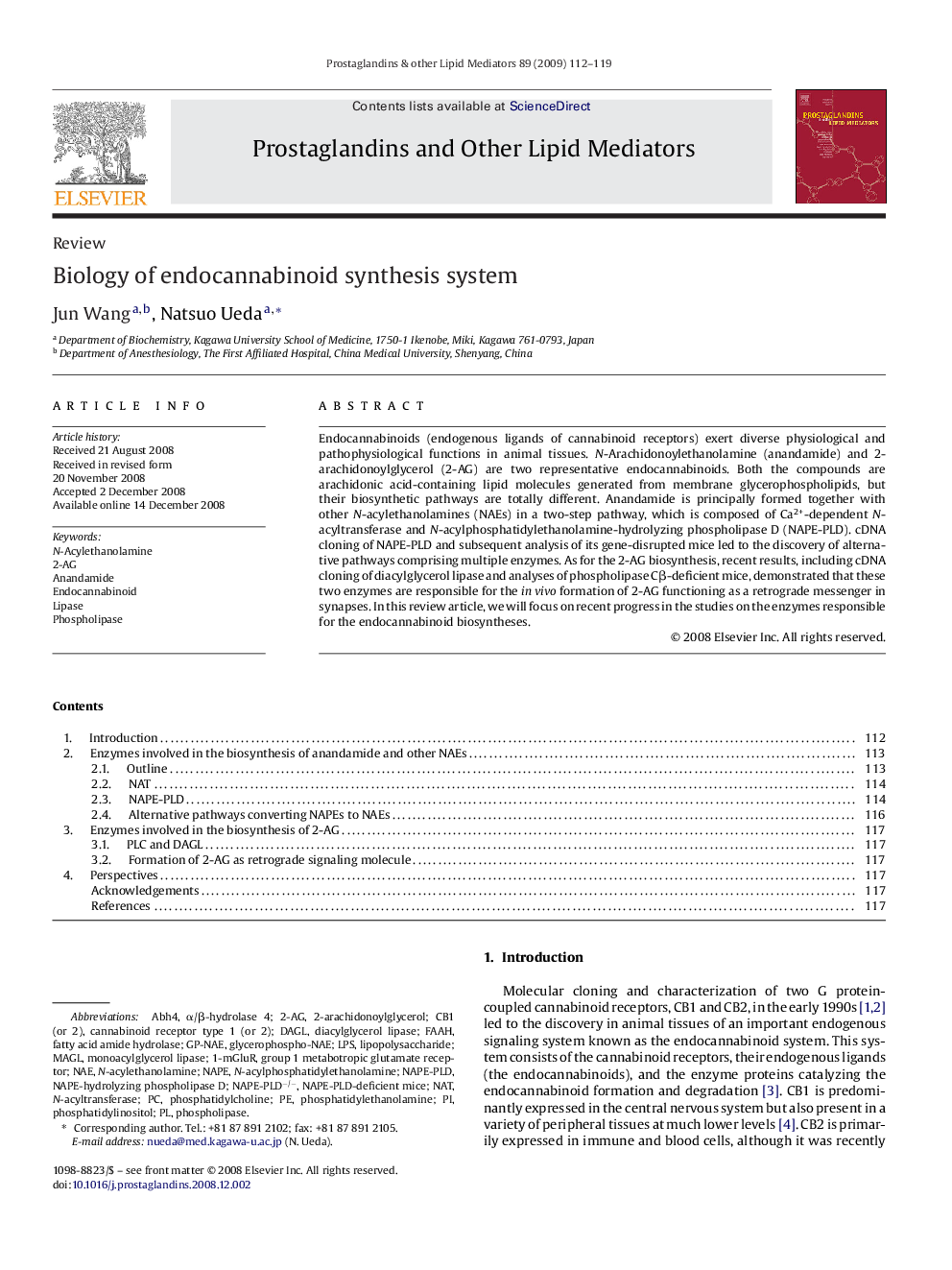| کد مقاله | کد نشریه | سال انتشار | مقاله انگلیسی | نسخه تمام متن |
|---|---|---|---|---|
| 2019900 | 1542240 | 2009 | 8 صفحه PDF | دانلود رایگان |

Endocannabinoids (endogenous ligands of cannabinoid receptors) exert diverse physiological and pathophysiological functions in animal tissues. N-Arachidonoylethanolamine (anandamide) and 2-arachidonoylglycerol (2-AG) are two representative endocannabinoids. Both the compounds are arachidonic acid-containing lipid molecules generated from membrane glycerophospholipids, but their biosynthetic pathways are totally different. Anandamide is principally formed together with other N-acylethanolamines (NAEs) in a two-step pathway, which is composed of Ca2+-dependent N-acyltransferase and N-acylphosphatidylethanolamine-hydrolyzing phospholipase D (NAPE-PLD). cDNA cloning of NAPE-PLD and subsequent analysis of its gene-disrupted mice led to the discovery of alternative pathways comprising multiple enzymes. As for the 2-AG biosynthesis, recent results, including cDNA cloning of diacylglycerol lipase and analyses of phospholipase Cβ-deficient mice, demonstrated that these two enzymes are responsible for the in vivo formation of 2-AG functioning as a retrograde messenger in synapses. In this review article, we will focus on recent progress in the studies on the enzymes responsible for the endocannabinoid biosyntheses.
Journal: Prostaglandins & Other Lipid Mediators - Volume 89, Issues 3–4, September 2009, Pages 112–119